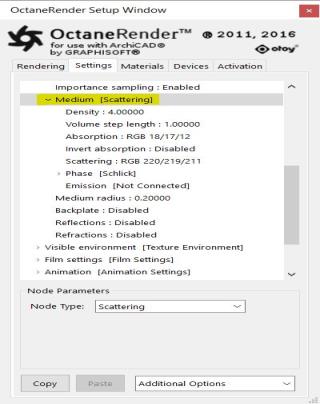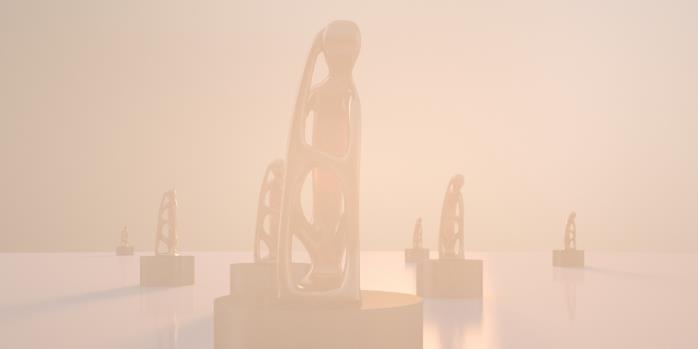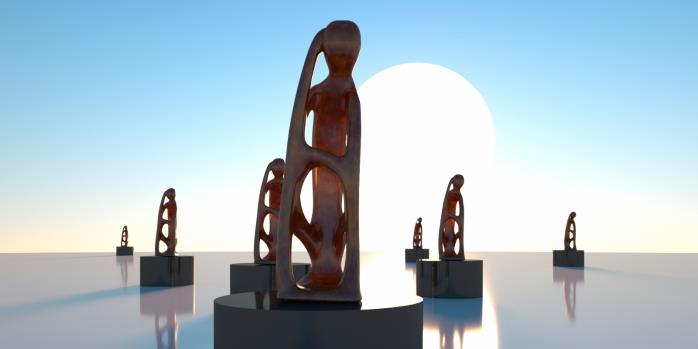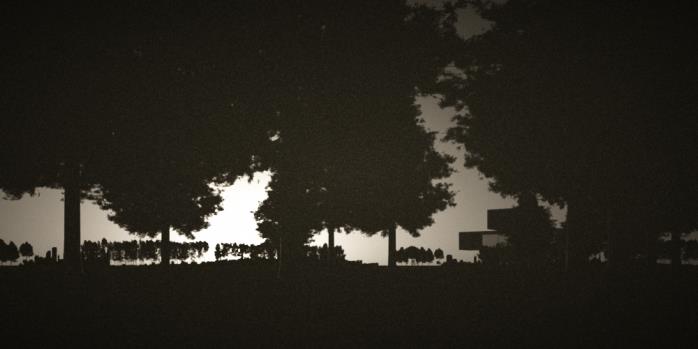Open topic with navigation
Fog With Environment Medium
This method is also known as fog + sky. This requires the need to use both the Environment and the Visible Environment pins. Users may add and experiment on the different kinds of medium nodes available, however, with the scattering quality that characterizes Fog in the real world, it is most practical to use scattering medium. Adjusting the Medium Radius in the Environment node and perhaps setting it to 2 would provide a desired effect.
Parameters
- Density - This parameter multiplies against Scattering.
- Volume Step Length - Depending on the surface, you may need to adjust this parameter. The default value is 4, but if the volume is smaller than this, you need to decrease the Step Length. Decreasing this value decreases render speed, and increasing the value causes the ray marching algorithm to take longer steps. If the Step Length exceeds the volume's dimensions, then the ray marching algorithm takes a single step through the whole volume. To get the most accurate results, keep the Step Length as small as possible.
- Absorption - Controlled by color, which defines how fast a medium absorbs light passing through it. A 0.0 or black value means no absorption. Higher values result in faster light absorption. The specified color in the Absorption parameter produces its complimentary color in the rendering (Figure 1). The Absorption texture is multiplied by the Density parameter. This allows setting a wide range of values.
- Scattering - Determines how fast light scatters as it moves through a surface. High values mean that light scatters sooner as it enters a surface, and low values mean that light passes deeper into the surface before scattering. A 0 value disables Scattering.
- Phase - Controls light direction as it scatters through the surface. A 0 value results in light scattering equally in all directions; a positive value results in forward scattering, where photons continue the same approximate direction as when they enter the surface; and a negative value results in backwards scattering, where light moves through the surface in the same direction, but opposite to the angle that they entered the surface (this is known as backscattering).
- Emission - Attaches an Emission node to the Emission input pin. When you connect an Emission node to a Medium node, it defines emission inside the volume instead of on the object's surface. In this case, Power controls how fast a ray's radiance increases while traveling through the volume; it doesn't represent total power. It's not multiplied with the Scale parameter. This effect works best with large, not-too-bright objects - small, bright objects create lots of noise.
 ← Settings used for next image with fog.
← Settings used for next image with fog.

In the example above, while the Daylight provides some sunlight to scatter around the scene, there is a texture environment connected to the Visible environment pin which ‘hides’ the daylight environment, so that the sun does not appear.

This figure shows the original scene without medium scattering and without the Visible Environment to compare.


Both figures show a Forest scene with Fog effect created using the Environment Medium with different settings for the Medium, but also for Sun and Exposure.
Open topic with navigation
 ← Settings used for next image with fog.
← Settings used for next image with fog. ← Settings used for next image with fog.
← Settings used for next image with fog.


